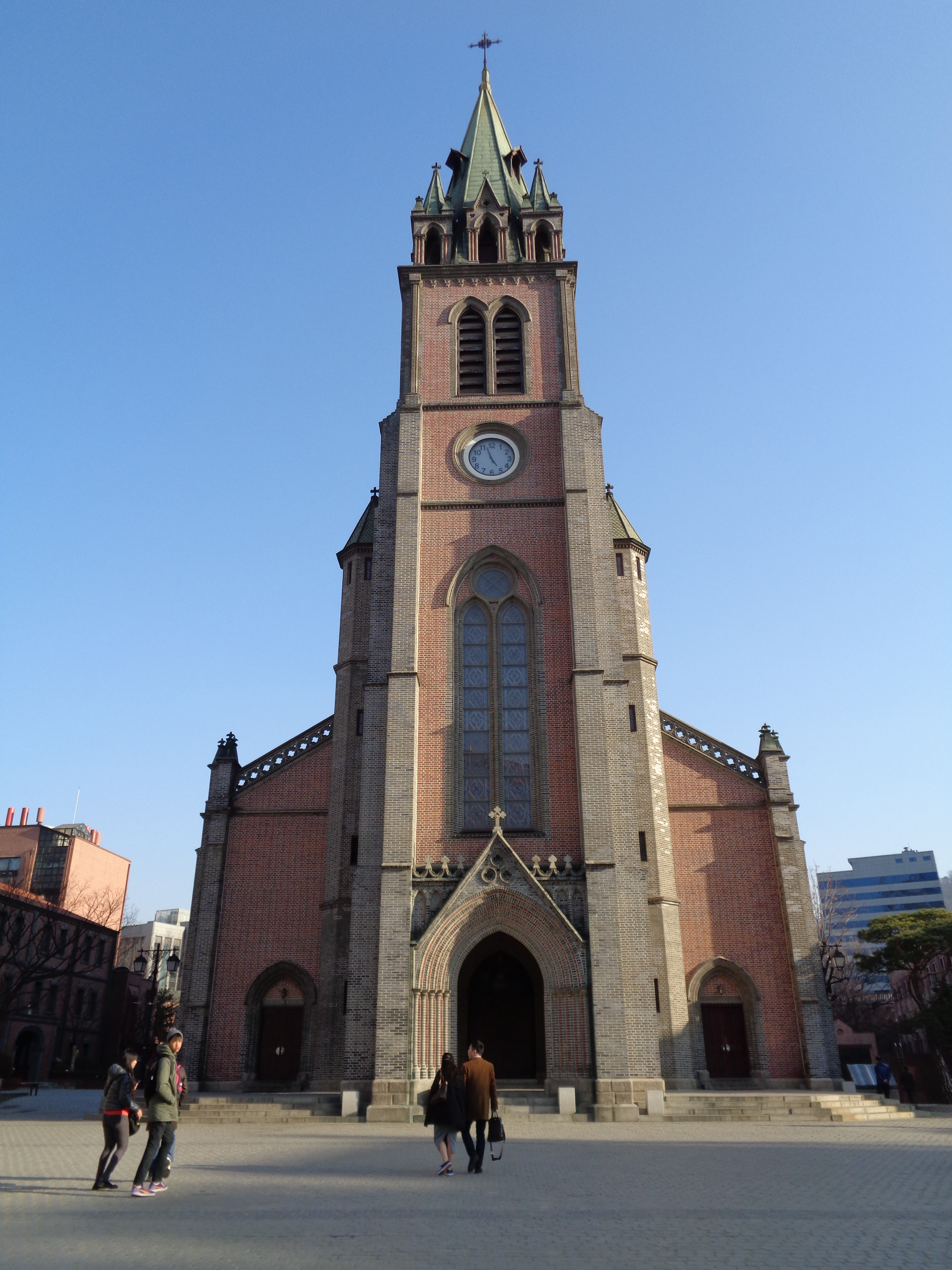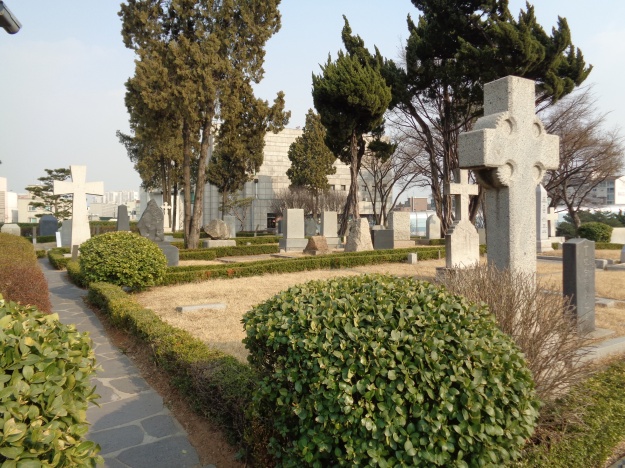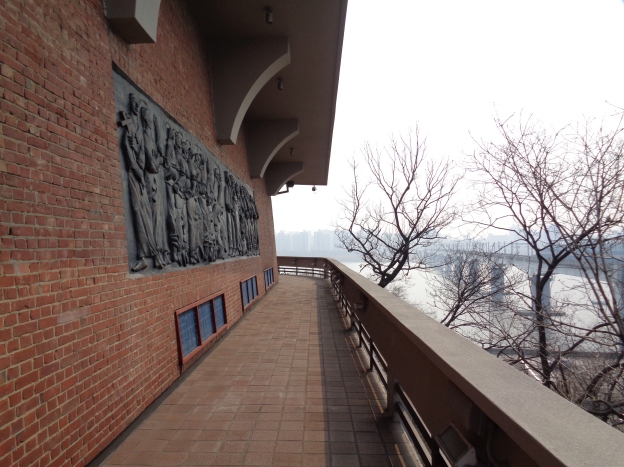In Western Seoul lies a small mountain with a very sinister name. Jeoldusan means “beheading hill”. it is a hill that has been renamed a couple of times and it was not until 2000 it got it sinister name yet it is easily linked to the religious struggle in the Korean past.
During my first visit to Seoul in 2016 I was quite surprised to learn tht the biggest official religion group in South Korea is Christians (with two thirds of them being Protestants), while this must the taken with a pinch of salt as for instance the Korean Shindo religion is not centrally organized. Christians still make up 28% of the population which very much surprised me. Quite a few churches can be found around Seoul including the impressive Myeong-dong, see below.

Myeong-Dong Cathedral
Jeoldusan Mountain and ther Persecution of Christians
In 1860s there were a number of persecutions of Christians in Korea. In 1863 Heungseon Daewongun came to power in Korea. At the time King Gojong was a minor and Heungseon ruled in this place. The princples of Heungseon’s rule which lasted for 10 years was predominiately isolatorism, its motto can best be described in “no treaties, no trade, no Catholics, no West, no Japan”. It was a policy that was persued rigourously during the decade and let to persecutions and some 8000 Christians killed during this period.
One of the infamous ones were the Byeongin Persecutions that took place at Jeoldusan mountain. Up to 2000 catholics were executed at the hill, many of them being thrown off the cliff and into the river in 1866. Byeongin refers to the name of the year in the Lunar Calendar.
The persecution resulted also in the deaths of 7 French missionaries and led to a French punitive expedition which seized the island of Ganghwa at the entry to the Han river but failed to achieve any significant impact, thus as the French forces withdrew (also urged by the French conflict in Mexico) the persecutions intensified as it was believed that the catholics were in league with foreign forces.

Jeoldusan Shrine
It was not until after the Korean War that the place became a sacred place however in 1967 to commemorate the centennial of the Byeongin Persecution the Shrine and Museum was completed.27 of the have been made saints in a number of persecutions around that time all of the commemorated at the altar at Jeoldusan.
Jeoldusan now containts a chapel, reliquary and museum of persecution, the latter show cases some of the horrific torture.

The Execution rock. It is said captured Christians had their skulls smashed against the rock
Pope John Paul II visited the site in 1984 and in 1985 it also saw a visit from Mother Teresa. This commemorated 200 years of Catholism in Korea.
A New Wave of Missionaries
On a more happy note, efter Heungseon Daewongun was dismissed in 1873 a somewhat more open policy was devised. This meant that missionaries slowly returned.
These were uneasy times for Korea, with a more pro-Western modernization of the country and both China and Japan being interested in controlling the peninsula. There were reforms and revolts such as the 1895 Donghak peasant revolt and the 1897 declaration of the Great Korean Empire in an attempt to break away from Chinese influence. In this period of Westernization the missionaries can to play a much greater role than sharing the Gospel. They got involved in establishments of hospitals, schools and ran orphanages. After 1910 when Korea was annexed by Japan many of these missionaries also because important in reminding the Western powers of the Korean dream of indepedence by sharing the knowledge of the small country to the world.
In 1890 John Heron a Presbytarian minister in Korea died and it was therefore decided to create a proper cemetery for the missionaries to Korea. This led to the establishment of the Yanghwajin Foreign Missionary Cemetery. 145 foreign missionaries and their families are buried here as well as children from the orphange.
The peaceful cemetery was also a victim of close quarters combat during the Korean War and war damage to many of the grave markers is quite evident as members of the foreign community decided against repairing many of the fractured tombs. The designs of the tombs found here are western in style, which is unique for Korea.

Sources: Wikipedia, Korea Tourism, Lonely Planet: Korea (2013 edition) and flyers from the sites

